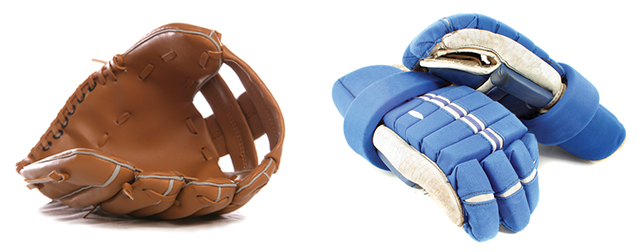Glove is a protective or decorative covering for the hand. It has a separate sheath for each finger. The word glove comes from an Anglo-Saxon term that means palm of the hand.
Archaeologists claim that prehistoric cave dwellers wore crude gloves. Workers in ancient Egypt, Greece, and Rome wore gloves to protect their hands during rough work.

During the Middle Ages, most Europeans wore mittens. Only the wealthy wore gloves, which were often decorated with embroidery and jewels. Armored knights wore gauntlets, or gloves made of heavy leather covered with plates of steel or iron. Knights often fastened ladies’ gloves to their helmets to show love or devotion.
Gloves of fine leather and silk were a symbol of rank in the 1800’s. The spotlessly clean gloves of people in the upper class showed that they did not have to do manual labor. Women were expected to wear white gloves for formal dress until the mid-1960’s.
Today, gloves are woven or knit from many types of materials. Such natural materials as leather, fur, silk, cotton, rubber, and wool continue to be used. Gloves are also made from various types of manufactured fibers, including nylon, acrylic, polyester, polypropylene, and spandex.
Insulated gloves protect the hands of workers from extreme heat or cold. Gloves treated with special plastics protect laboratory workers from harmful chemicals. Gloves with padded palms cushion the hands of baseball players and long-distance bikers. Medical professionals use smooth, tight-fitting gloves of latex rubber that allow flexibility while preventing contact with viruses.
